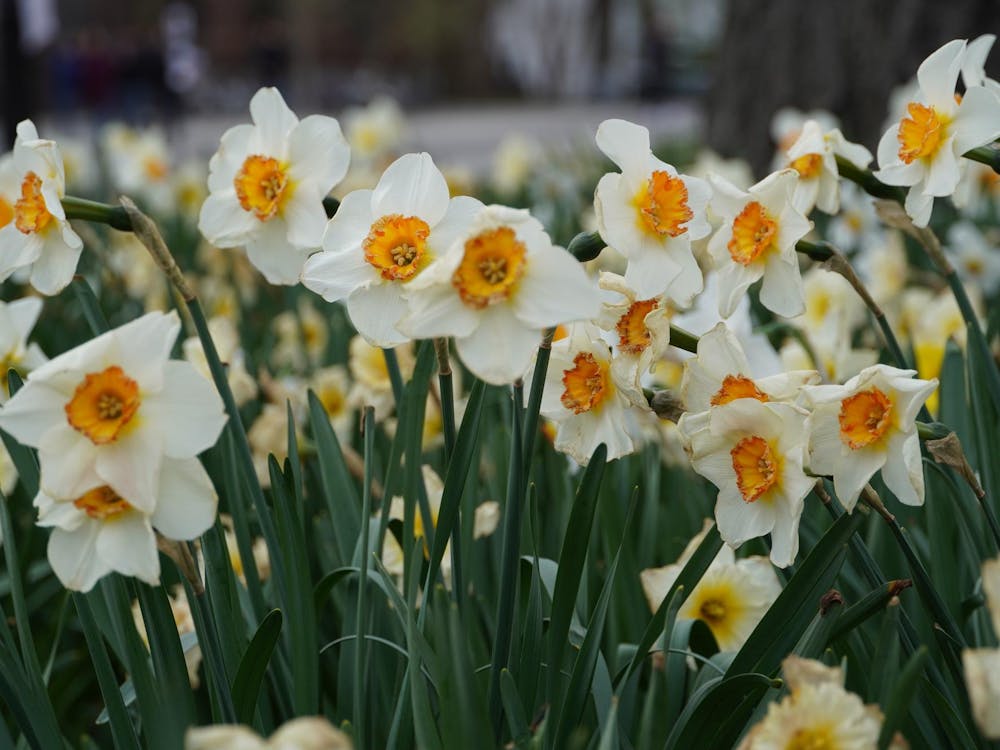As we plunged deeper and deeper into the dense rainforest of Madagascar, there was little that could prepare me for the trek that lay ahead. Atop the mountains of Betampona Natural Reserve, the air was refreshing and clean. As was routine with constant downpour of the region, the plants glistened as beads of rainfall bore signs of the earth washed anew with this morning’s rain.
Around me, a rush of air fills my ears as the sound moves its way through the trees and echoes off cliffs. The trail takes a steep drop as my field group and I descend towards the sound. As our altitude falls, the ground beneath my boots grows increasingly wet until my feet begin to sink deeper and deeper into the soft mud with each step. Grabbing on to slick roots and moss-covered trees, it wasn’t long before I found the source of the sound.
Before me stood a beautiful site of nature in its purest form: a pristine river forming a waterfall as it spilled over the rocks into a pool of water. White foam swirled and crashed against rocks jutting out of the stream as my group and I took great care crossing its strong current. At last, clad in swimming clothes, we cast our towels and muddy boots on the rocks and plunged into the cool water.
Though I am entering my fifth week here in Madagascar, each day, like the swimming adventure, is invigorating. As spring began to show its first signs in late March, I found out that I had received the opportunity and funding to work for nine weeks on this island as part of a research internship facilitated through the Metcalf Lab in partnership with the High Meadows Environmental Institute. Alongside other interns, PhD candidates, veterinary students, and other research fellows, I am working on an ongoing project focusing on conservation and health of endangered species as it relates to ecological shifts and the spread of infectious diseases within the human-wildlife interface.
Before I arrived for my internship, I embarked on a 22-hour long journey halfway across the world, knowing little of what the summer held in store. Though I spent the last few months in preparation, with vaccinations, safety trainings, and meetings, I couldn’t help but feel the buzz of nerves under my skin as I disembarked from my Air France flight in Antananarivo. My nerves were only compounded by the hectic airport and the inky twilight of midnight in Madagascar’s capital city.
As night turned to day as I stayed up with my fellow interns, I began to feel oriented in my new surroundings and the solid ground beneath my feet. I acquainted myself with the rest of the research cohort, the climate, and the other trappings of my life for the next nine weeks. Like with all things, familiarity slowly, but surely, settled into my bones, making me feel at home amidst all the newness.
Though stability and consistency were not luxuries that I had the fortune of taking advantage of during my time here. Even from previewing the packed itinerary, I was daunted at the calls for constant motion and flexibility. As the weeks unfolded before me, I moved from different cities and field sites all over the island and could never be certain of what the next day would hold. Nevertheless, I plunged forward with a voracious curiosity, eager to learn and grow with the demands of this internship.
Immediately, my zeal reaped its rewards in the natural beauty and sights that belonged in National Geographic magazines.
Beyond appreciating the breathtaking views, my time here was rich with opportunities to work hands-on with the environment and wildlife. Like most field work, the primary goal was to collect data and samples. Many days this looked like setting up and checking animal traps. With the animals we did capture, we performed physical examinations to test for parasites and other health indicators, while also collecting urine, hair, blood, and other biological samples. Other times, we set up and monitored instruments used for gathering environmental data. Beyond just animal samples, details such as collected rainfall and water from local villages work to understand the entire ecosystem.
Though I came in apprehensively due to my inexperience compared to the rest of my cohort, an open mind and willingness to embrace my uncertainty allowed me to learn more and contribute that I thought I could. From DNA purification to red blood cell pathology, we worked to gather the final pieces of this ecological puzzle.
Now, as I approach the halfway mark of my time here, I think of how I have changed and learned during my time in the rainforest. I came into this experience knowing so little about hematology, infectious diseases, the terrain and wildlife of such a biodiverse region, and more. Though I don’t know when I will next have the opportunity to return to this island, the skills and experiences and people I’ve met will stick with me for the rest of my life and career.
Sedise Tiruneh is a member of the Class of 2027 and a contributor to The Prospect at the ‘Prince.’ She can be reached at st6591[at]princeton.edu.










